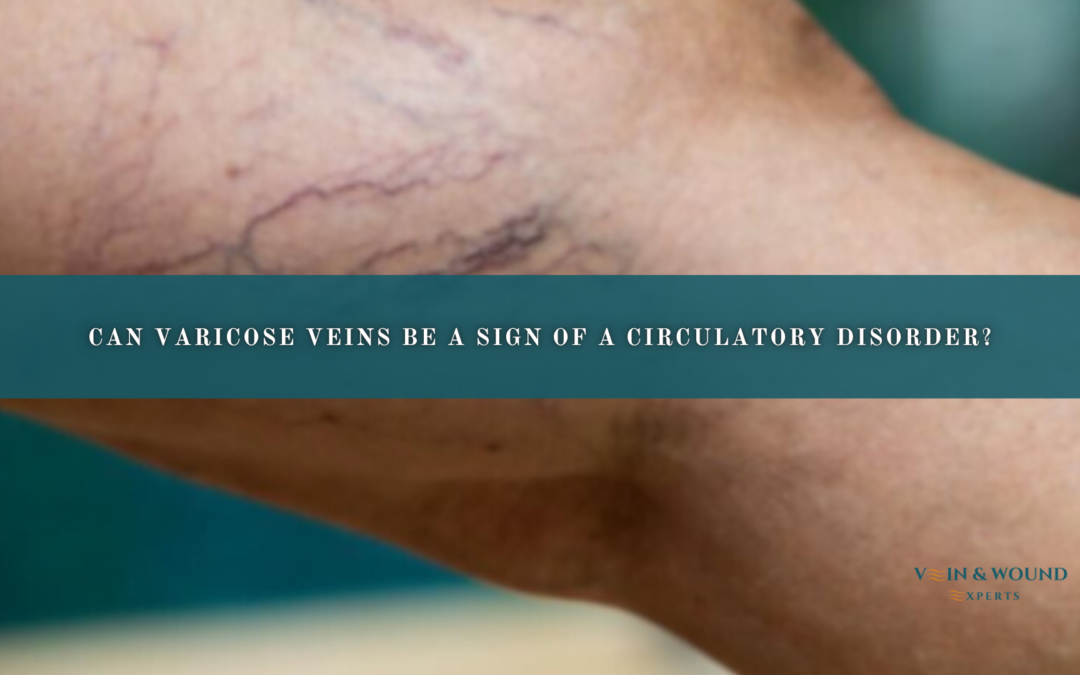🩺 Are Varicose Veins a Circulation Warning Sign?

Varicose veins are a common condition that many people face, but did you know they could be a sign of more serious circulatory issues? Understanding the connection between varicose veins and heart disease is important for early detection and treatment. While varicose veins are often considered just a cosmetic issue, they may indicate an underlying problem with your circulation.
🧬 How Varicose Veins Relate to Circulatory Disorders
Varicose veins occur when veins become enlarged, twisted, or swollen, and they are often a result of poor circulation. Circulation disorders and varicose veins are closely linked because compromised blood flow can cause veins to struggle in moving blood back to the heart. If left untreated, this poor circulation may lead to more serious health complications. It’s important to recognize the signs and seek medical advice before conditions like heart disease become a more significant risk.
💡 Are Varicose Veins Dangerous?

While varicose veins aren’t always a serious concern, they can sometimes signal underlying circulatory problems. When blood struggles to flow back to the heart, it increases pressure in the veins, which contributes to the development of varicose veins. If you notice symptoms like swelling, heaviness, or skin discoloration in the affected areas, it’s important to consider the potential risks. In some cases, untreated varicose veins can lead to complications such as skin ulcers, blood clots, or more severe heart issues.
🌡️ Recognizing Poor Circulation Symptoms
Poor circulation is a major contributor to varicose veins, and recognizing the symptoms early can help prevent further issues. Common signs of poor circulation include cold feet, numbness or tingling in the limbs, swelling in the legs, and visible varicose veins. If you notice any of these symptoms, it’s important to consult with a healthcare professional who can diagnose the underlying cause and recommend appropriate treatment to avoid complications.
❤️ The Link Between Circulation Problems and Heart Disease
One of the most concerning connections between varicose veins and circulatory health is the added strain on the heart. When blood flow is impaired in the veins, it forces the heart to work harder to pump blood throughout the body. This increased pressure can contribute to heart-related issues and other complications if left untreated. It’s important to recognize that what may appear as a cosmetic concern could actually indicate a deeper circulatory problem that requires medical attention.
🩺 When to See a Doctor for Vein Issues

If you’re dealing with varicose veins, it’s a good idea to schedule a check-up with your doctor. Symptoms like increased pain, swelling, or noticeable changes in your veins could indicate underlying circulatory issues that may require treatment. Your doctor can assess your symptoms, perform tests, and determine whether your vein problems are linked to broader circulatory conditions, such as heart disease.
🌿 Steps to Improve Circulation and Vein Health
Improving circulation is key to managing and preventing varicose veins. Here are some practical steps to promote better vein health:
-
Exercise Regularly: Moving your legs through activities like walking or swimming can help improve circulation.
-
Elevate Your Legs: When sitting or resting, elevate your legs to encourage blood flow back to the heart.
-
Wear Compression Stockings: These can help reduce swelling and improve circulation in the legs.
-
Stay Hydrated and Eat Well: A balanced diet and staying hydrated are crucial for maintaining good circulation and overall vascular health.
By understanding the link between varicose veins and circulatory issues, you can take proactive steps to improve your health. Early detection and lifestyle adjustments can prevent complications and improve your overall quality of life.
Andy Sharify
Position
